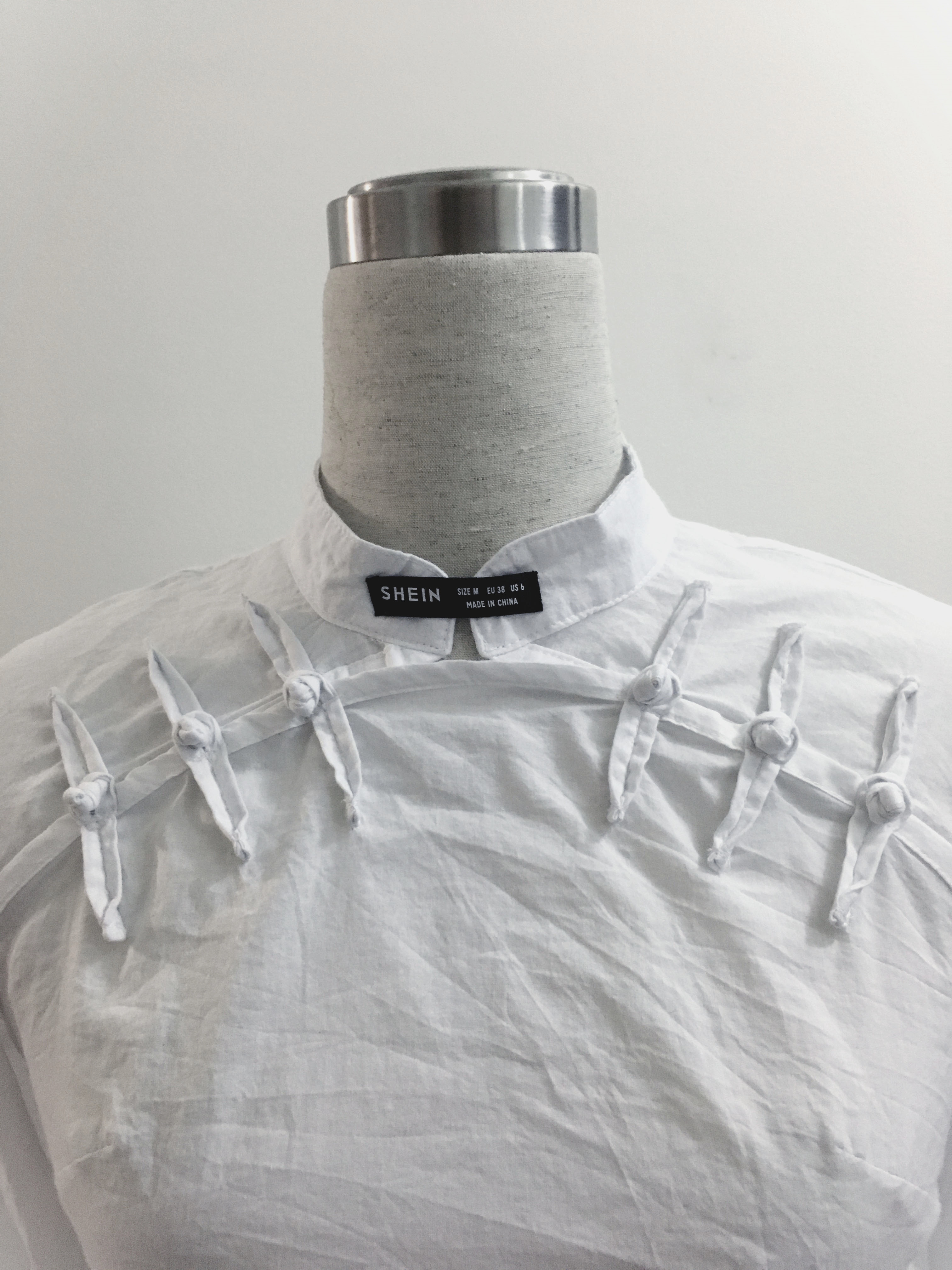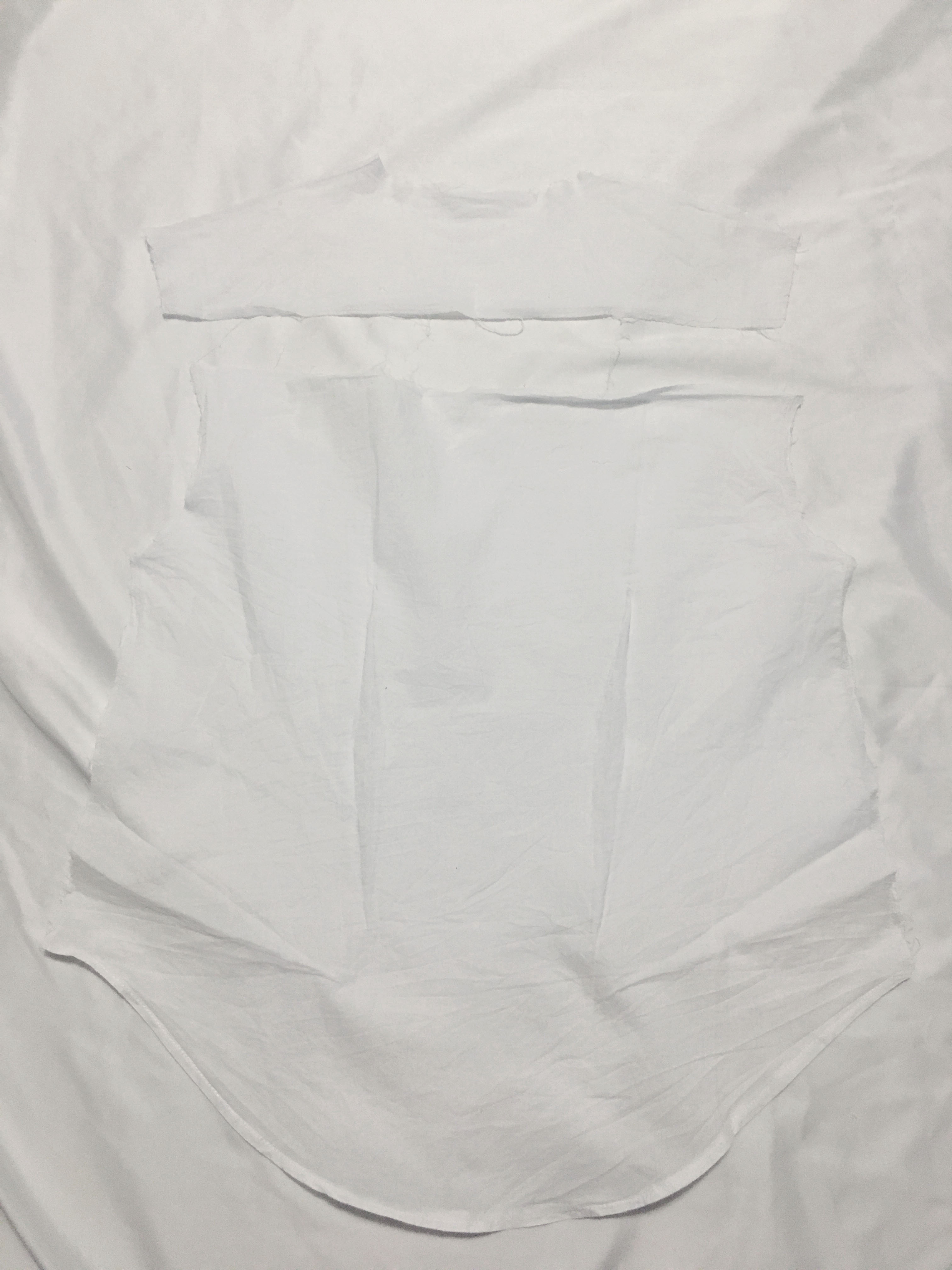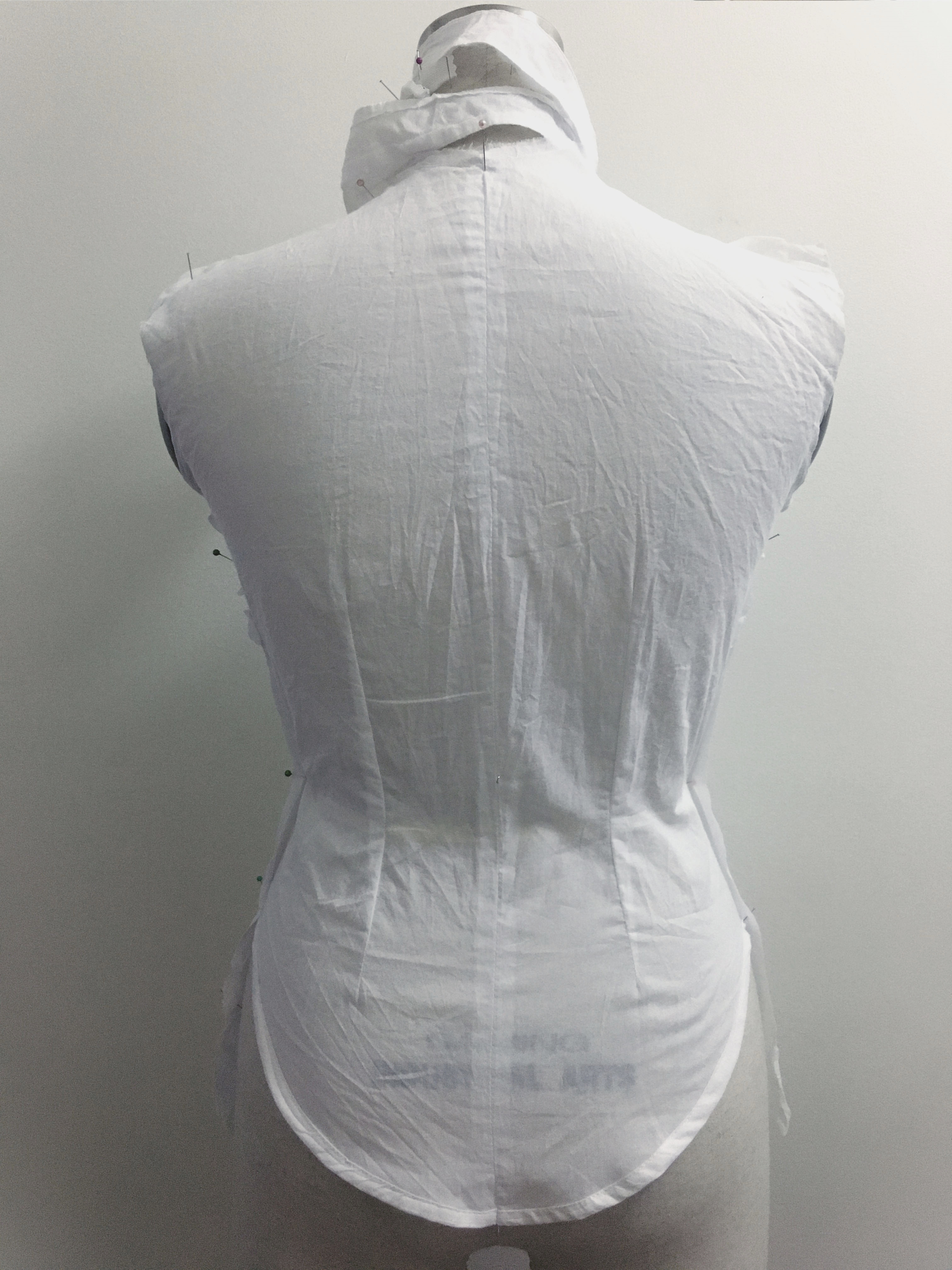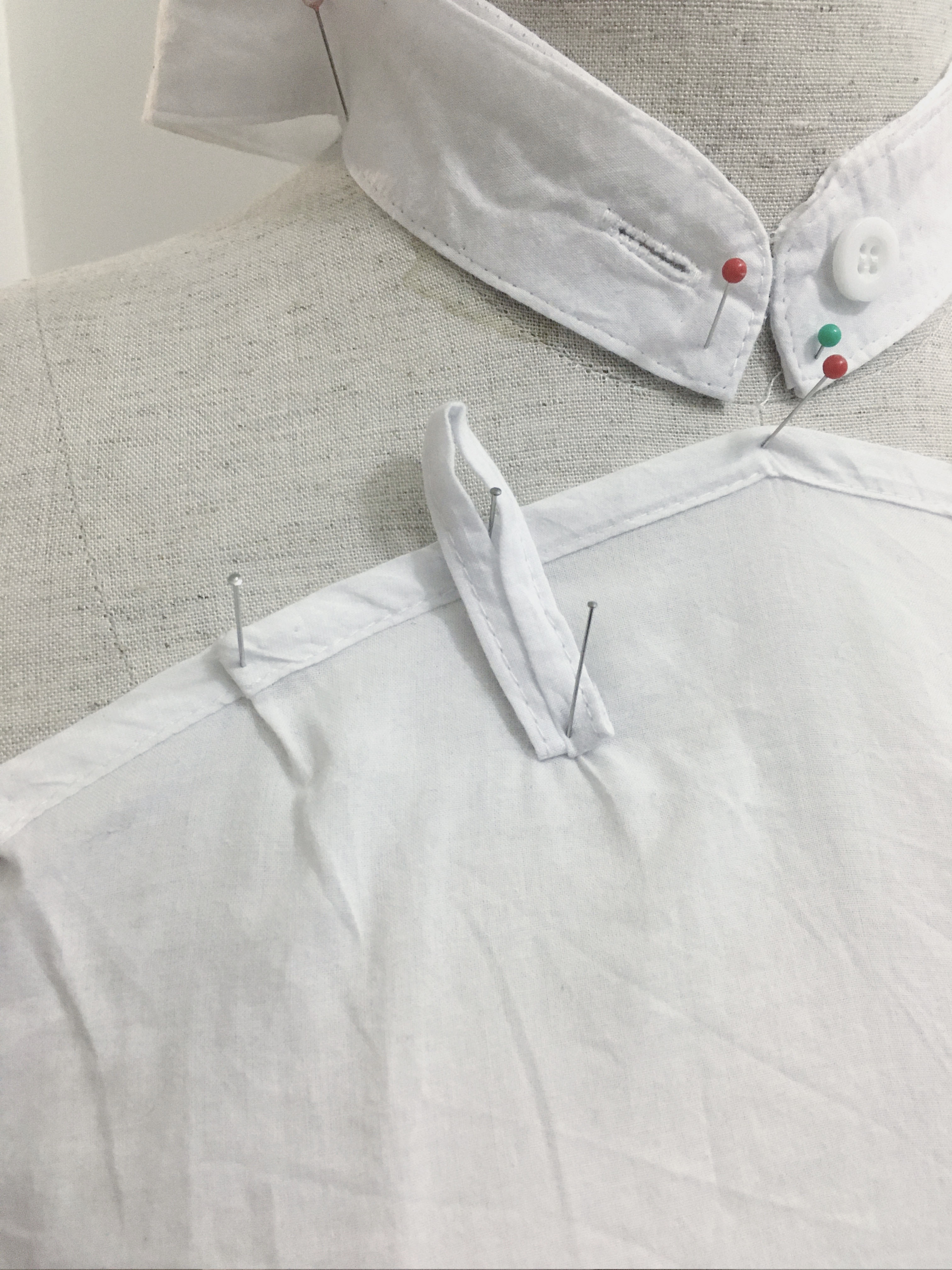before


Origin Story
Since globalization and the mass production of (fast) fashion, companies have normalized offshore manufacturing for cheap labour that exploit skilled garment workers. It’s been a major issue in the fashion industry, along with the constant output of low quality and unsustainable clothing which encourages overconsumption and contributes to our throwaway lifestyle / waste society.
With this white dress shirt from SHEIN, I wanted to (re)transform it into traditional clothing from where it was made — in China — to emphasize who / where the people are that make our clothes. The qipao / cheongsam reminds us of the original culture of the garment workers, but also contrasts the unedited shirt to communicate the dominant western influence in global fashion as a consequence of colonialism and imperialist structures.
after




Displayed on April 19-23 during Fashion Revolution Week 2022.
I got this fun opportunity to be a part of the shirt project for @fash_rev_toronto! I was given a random secondhand shirt to work on and had creative freedom. With the theme “Money Fashion Power” for this year’s @fash_rev week, this is my interpretation of it which was also inspired by the main reason why the movement and organization started — a call to action for better, safer working conditions and living wages for garment workers, but also to improve the fashion industry overall for the people and the environment.
I got a shirt from SHEIN, a fast fashion brand based in China that’s sold globally online. They sell affordable clothing which makes it very accessible for low income to average consumers. They also offer a huge variety and have a similar business model to brands like H&M, Zara, Urban Outfitters…etc that have 52 “micro-seasons” — a new collection every week, but SHEIN endlessly releases about 1,000 styles every day!! Who makes these clothes and why are they so cheap? It’s no mystery, we’ve just been really disconnected to the story behind the making of our clothes.
”We’ve normalized this carefree mentality where we don’t truly recognize the labour process… We’re unaware or we avoid confronting the dark reality of where, but also who the makers are throughout the supply chains, how it’s produced…”
-from my Crisis of Convenience [w.a.s.t.e] project statement
So I reworked the shirt to resemble a traditional Chinese garment commonly worn by working class women, a qipao/cheongsam — I’m hesitant to state it as such since they’re typically made with silk fabric and have beautiful intricate embroidery designs. My piece represents the original and is meant to make us think about SHEIN garment workers and connect us to the people behind the clothing, I also want the transformation to prompt more questions and create discussions.
Also with my previous project highlighting the similarities between plastics and fashion, it’s important to note that the SHEIN shirt is 100% polyester — a synthetic textile derived from petroleum (so it’s basically plastic), which illustrates the fashion industry’s reliance on fossil fuels.
︎︎︎ See the process ︎︎︎
























“Money, Fashion, Power” in Chinese Calligraphy by Kaman Lu
Digital art — inkjet printed and transferred with gloss.
Digital art — inkjet printed and transferred with gloss.


